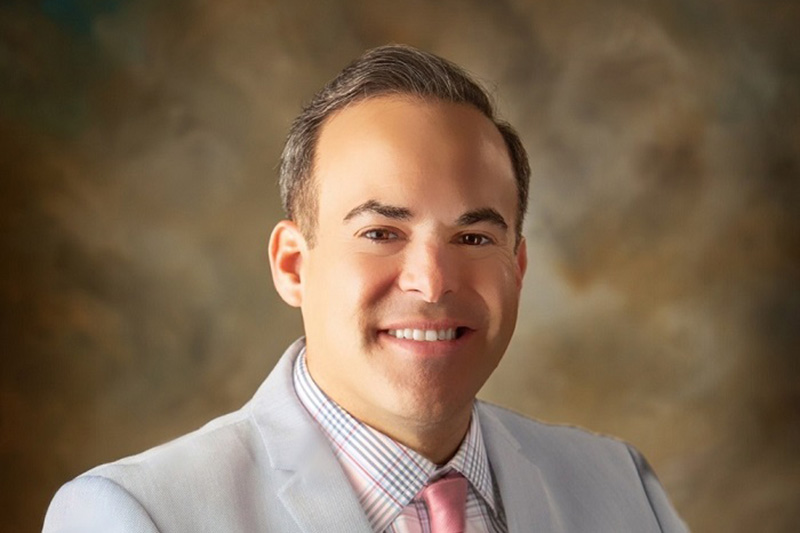Reducing Barriers to Health Insurance Access
Here’s how we serve diverse communities to help them achieve better health.

As a first-generation immigrant, I understand how challenging it can be to navigate insurance, especially when materials and information are not available in a preferred language, and the concepts being introduced are new and unfamiliar. This can make the experience of gaining access to healthcare unpleasant and can even lead to hesitation when enrolling on a health plan or fully utilizing its benefits. Health insurance is designed to protect against high medical costs and covers important health benefits such as free preventive care services that are essential to maintaining a healthy life. Those who are uninsured or underinsured are often unable to access medical care and face heightened health risks.
Healthcare disparities are evident across communities—where merely a ZIP code or specific neighborhood greatly influences the health and wellness outcomes of the people living within the boundary lines. Ethnicity, sexual orientation, gender identity, religion, nationality, geography, and immigration status are all factors that can influence what resources are allocated for a given population, which in turn impacts educational and health outcomes.
Disparities continue past the healthcare landscape. The accessibility and affordability of coverage are two factors that determine whether an individual or family can regularly visit a healthcare provider, has access to necessary tests and exams throughout the year, and receives essential medications that help prevent disease progression and treat pre-existing illnesses. If an individual is not able to meet the expenses of medical care and medications or struggles with access, the health of the individual is compromised and that can influence how their health progresses with age.
Equality versus equity
Equality refers to opportunity—ensuring the same resources are widely available to all. Equity, on the other hand, makes sure that each individual has access to resources that have been tailored to their needs available to help them reach the same outcomes as others—including health outcomes. Just as different communities have different health needs, individuals are unique and have different needs.
Barriers to health insurance
There are numerous challenges to overcome when serving diverse communities. Two such challenges are language and cultural barriers.
The language barrier
Language barriers can easily prevent an individual from making informed decisions regarding their healthcare and insurance. For example, a first-generation American who is from a different country and health system may find the concept of employer-sponsored health insurance as a benefit of being employed strange. They may not know what care and services are available to them and at what cost, reducing their ability to take charge of their health. Or, a family transitioning from a government-assisted program like Medicaid may be overwhelmed when enrolling on an employer-sponsored plan because they now may have the ability to select a plan from a pre-approved list.
Ineffective communication can lead to a host of problems for the individual, the healthcare provider, and the insurer, including:
- Decrease in care quality
- Decrease in health outcomes
- Increase in medical costs
- Decrease in overall dissatisfaction with the experience and system
The cultural barrier
Defeating the language barrier is not the only hurdle. Communication and outreach must be culturally appropriate so individuals can see the value of healthcare and insurance. Each individual brings certain beliefs, values, and customs that may be different from other cultures. Providing culturally appropriate care and service honors these unique norms and provides an inviting welcome for all who are new to the system. This can include delivering messages, selecting images, and using genuine words that resonate with each community. It creates a safe and accepting environment for all and focuses on empowering individuals with tailored tools and educational materials that guide them through their unique healthcare and insurance journey.
Multicultural outreach
Multicultural outreach is directly connected to understanding and responding to the various disparities and determinants of health. It helps bridge language and cultural barriers so that more people can reach—and maintain—good health, no matter their background.
Representation matters
Genuine outreach and superior service are critical. Employing teams of multilingual caregivers who can support and help individuals ensures that people receive the right care, at the right time, and in their language of preference. Representation of many diverse communities can help more individuals feel included, celebrated, and acknowledged.
Digital equity matters
Digital communication is also vital when considering multicultural outreach. Most activities can be done on an electronic device such as a smartphone or computer. Virtual care and digital resources are becoming cost-effective and convenient tools to stay connected with healthcare providers, insurers, and pharmacies. If these resources are not available in a particular language, many individuals are simply unable to use them. Creating a personalized digital experience can further educate an individual on preventive care services and screenings and keep them apprised of important insurance information, such as deductibles and premiums as well as other benefit information.
Health is impacted by a variety of factors. Understanding what they are and opening discussions on how improvements can be made is only the first step in removing barriers to access to insurance coverage. I found my passion for healthcare and have dedicated myself to helping others learn about insurance so that they can utilize the benefits available to them to improve their health and overall life.
Related: Appreciating the Impact of Social Determinants of Health
